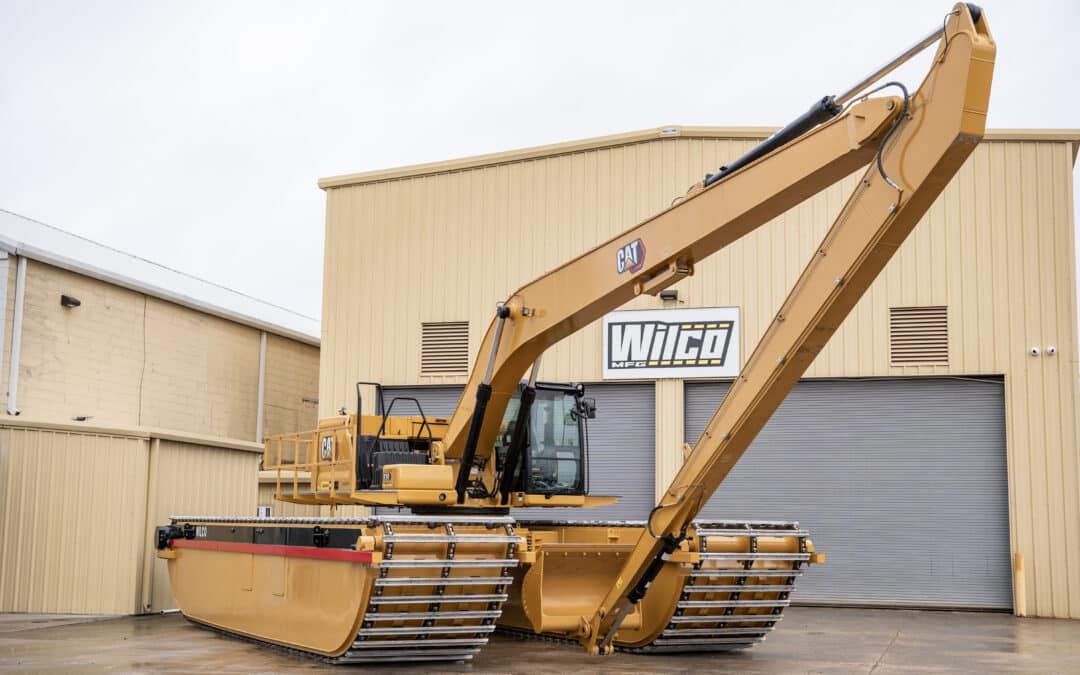Every project requiring amphibious equipment begins with a clear challenge: how to operate effectively in environments where land and water intersect. Standard construction or excavation machinery cannot perform reliably in wetlands, swamps, riverbanks, or coastal zones. This is why buyers turn to tailored solutions.
Wilco has become recognised as a trusted marsh buggy builder, designing and delivering custom amphibious equipment for industries that demand specialised tools. From engineered solutions that address buoyancy and traction to durable materials that withstand long-term exposure to mud and water, each machine is the result of precise planning and manufacturing expertise.
For a closer look at existing product models, buyers can review the full range of Wilco equipment designed for varying terrain and operational needs.
Why Custom Amphibious Equipment Matters
Unlike conventional earthmoving or dredging machinery, amphibious equipment is built for access, stability, and performance in environments where other machines fail. The benefits of custom builds are significant:
- Adaptability: Machines can be designed for specific terrain, load requirements, or environmental regulations.
- Durability: Reinforced pontoons, corrosion-resistant coatings, and heavy-duty tracks withstand harsh conditions.
- Efficiency: Engineered systems ensure equipment performs consistently in soft soils and shallow water.
- Safety: Purpose-built stability reduces risk during heavy lifting or excavation.
For industries where downtime is costly and conditions are unpredictable, customisation ensures machinery meets real-world demands.
The Design Philosophy: Engineered Solutions
At the core of every Wilco project is a focus on engineered solutions. Each build begins with precise calculations to determine flotation, load capacity, and hydraulic requirements. Engineers collaborate directly with clients to design equipment that aligns with operational goals.
Key considerations include:
- Buoyancy ratios for pontoons.
- Structural strength of booms and frames.
- Hydraulic flow for excavator arms or dredge pumps.
- Track design for reliable traction in saturated ground.
This careful planning ensures equipment is not only effective but also resilient under field conditions.
Practical examples of this design approach can be viewed in Wilco’s equipment gallery, where past projects showcase the versatility of amphibious builds.
From Blueprint to Build: Manufacturing Capabilities
As an experienced marsh buggy builder, Wilco’s manufacturing process combines advanced fabrication with hands-on expertise. Every stage of production is managed with attention to detail.
Core capabilities include:
- Fabrication: Welding, cutting, and assembly of pontoons, undercarriages, and deck frames.
- Integration: Installing hydraulic systems, engines, or specialised attachments.
- Customisation: Adapting dimensions, deck layouts, and auxiliary equipment to match buyer specifications.
- Testing: Verifying performance in controlled conditions before delivery.
This process ensures buyers receive machines tailored to their environment while maintaining the reliability expected of Wilco’s builds.
Collaboration with Buyers
Custom projects rely on communication. Every build begins with an in-depth consultation where requirements are defined. Buyers are encouraged to provide details such as:
- Operating environment (depth, soil type, vegetation).
- Expected workloads and lifting requirements.
- Attachments needed (e.g., dredge heads, excavator arms, cranes).
- Long-term goals for durability and maintenance.
Updates continue throughout the build process to ensure alignment with client expectations. For those ready to begin a consultation, Wilco’s team can be contacted directly at bwilson@wilcomarshbuggies.com.
Applications Across Industries
Wilco’s custom amphibious equipment is used across multiple sectors where traditional machinery cannot provide access or reliability.
- Oil and Gas
Supporting pipeline installation, inspection, and maintenance in wetland or marsh conditions.
- Environmental Restoration
Removing invasive vegetation, dredging shallow waterways, and restoring ecosystems.
- Construction
Providing access to infrastructure projects such as bridges, levees, and flood-control structures.
- Powerline Maintenance
Operating in flooded or storm-affected areas to ensure reliable recovery and repair.
By tailoring each build to its specific environment, Wilco ensures its equipment performs where it is most needed.
Materials and Durability
Durability is central to Wilco’s designs. Amphibious equipment must withstand exposure to water, mud, and vegetation without compromising performance.
- Pontoons are coated for corrosion resistance.
- Heavy-duty tracks minimise slippage and wear.
- Hydraulic systems are designed for extended operation.
- Maintenance access is prioritised to reduce downtime.
These design choices result in machines capable of long service lives, even in some of the harshest environments.
The Advantage of a Dedicated Marsh Buggy Builder
Working with a dedicated marsh buggy builder like Wilco ensures that expertise is applied at every stage of the process. Unlike adapting conventional machinery, amphibious builds require unique knowledge of:
- Weight distribution on soft ground.
- Flotation mechanics in shallow water.
- Safety requirements in unstable conditions.
- Integration of heavy equipment on buoyant platforms.
This specialisation ensures every machine is not only functional but also safe and reliable.
Testing and Quality Control
Before delivery, every piece of equipment undergoes strict testing. This includes:
- Buoyancy checks in varied depths.
- Stability tests under load conditions.
- Hydraulic system stress tests.
- Safety compliance inspections.
This final stage ensures that equipment meets the performance standards expected in real-world applications.
For buyers interested in initiating a project or requesting specifications, Wilco provides direct communication channels through their contact page.
Building Confidence Through Transparency
Every aspect of Wilco’s process—from consultation to final testing—is designed to keep buyers informed. Transparency reduces uncertainty, fosters trust, and ensures equipment is delivered as expected.
This philosophy, combined with years of expertise, is why Wilco is consistently sought after for custom amphibious equipment solutions.
Conclusion
Amphibious equipment requires more than conventional design—it demands precision, durability, and adaptability to perform where land and water meet. By focusing on engineered solutions, Wilco has developed a proven process for delivering custom amphibious equipment that meets the demands of diverse industries.
From consultation and design to fabrication, testing, and delivery, Wilco’s approach reflects the expertise of a dedicated marsh buggy builder. Each build is a collaboration with buyers, ensuring that equipment is not only fit for purpose but capable of performing in the most challenging environments.
With an emphasis on transparency and engineering precision, Wilco continues to provide reliable solutions for industries that depend on specialised access and durability.
Frequently Asked Questions (FAQ)
1. What is the advantage of custom amphibious equipment over standard models?
Custom designs allow equipment to be adapted to specific conditions, ensuring higher performance, longer service life, and safer operation compared to off-the-shelf machinery.
2. Can Wilco modify existing amphibious equipment?
Yes. Wilco can retrofit or upgrade existing machines to meet new requirements, in addition to designing and building entirely new equipment.
3. How long does the manufacturing process take?
Timelines vary based on project complexity. Smaller modifications may take several weeks, while full custom builds can extend over several months.
4. What industries most commonly use Wilco’s machines?
Oil and gas, environmental restoration, construction, and powerline maintenance are among the most common.
5. Are the machines tested before delivery?
Yes. Each build undergoes buoyancy, stability, and hydraulic performance testing to ensure it meets operational standards.
6. What kind of maintenance is required?
Routine maintenance, such as checking hydraulic systems, lubricating tracks, and inspecting pontoons, helps extend equipment life and maintain performance.


